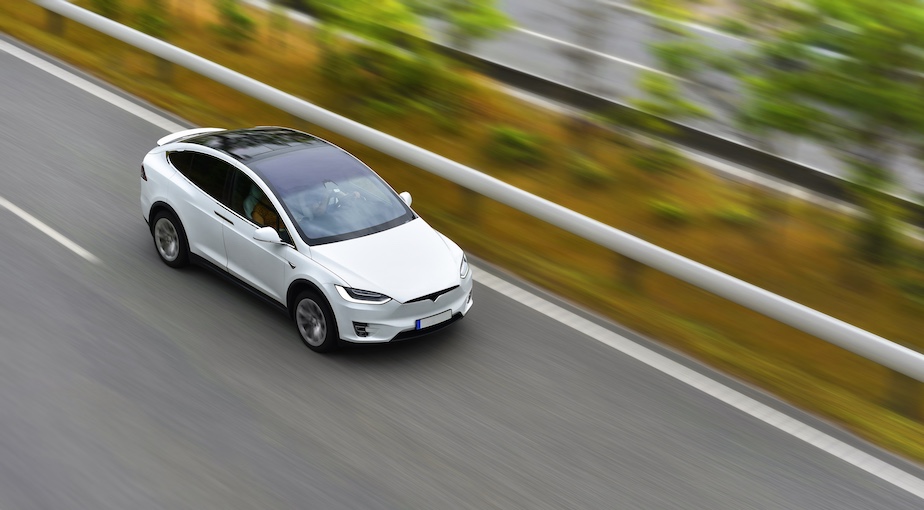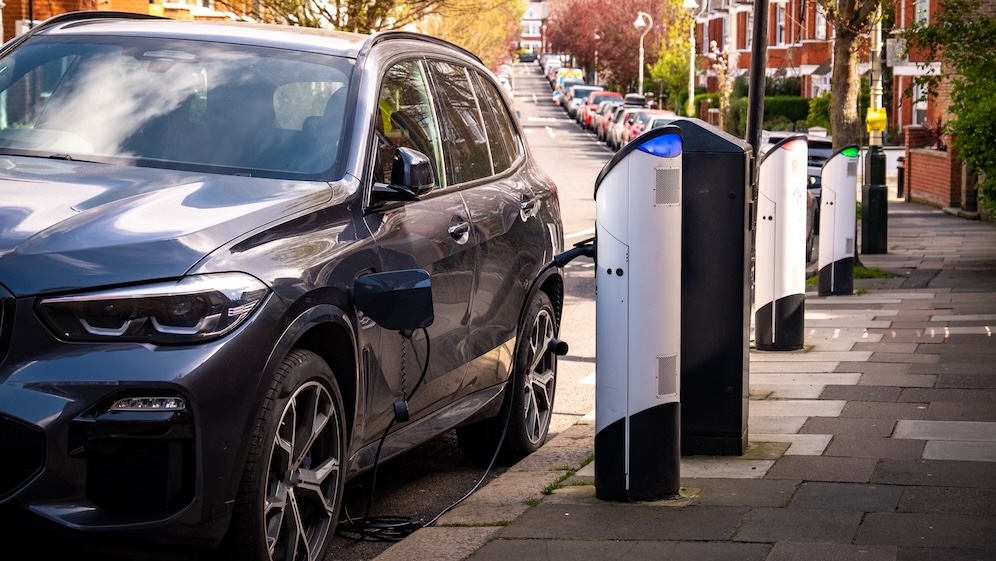Are electric vehicles better for the environment? EV sustainability explained
We all want to make greener choices that have a positive impact on the planet, and this includes the mode of transport we choose . This is one of the reasons that electric vehicle (EV) registrations have soared by 560% since 2020, reaching almost a million EVs on UK roads. Despite their increase in popularity and adoption, misconceptions around EV sustainability are widespread, and a common question is, ‘are electric vehicles better for the environment?’
Whether you’re thinking about buying an electric vehicle or already own one, you might have questions about the environmental impact – from production emissions to energy sources and battery waste.
In this article we provide a full lifecycle analysis of an EV’s sustainability credentials – from production right up until the end of its life and beyond.
Understanding the environmental impact of electric vehicles
Electric vehicles’ environmental impact can be considered in four key categories of lifecycle analysis: materials, production, energy use and recycling.
Materials
The raw materials required to manufacture EV batteries include nickel, cobalt, manganese, and lithium. In the past, obtaining these materials has caused environmental concern (for example, mining lithium used large quantities of water).
However, more recently, there have been significant developments in sustainable methods of resource extraction. In 2022, for example, a British company became the first to mine and refine lithium in one location, reducing the environmental impact.
EV battery disposal and recycling
Using fast, rapid or ultra-rapid charging impacts your EV battery over time. This is because fast charging generates more heat, and doing this on a regular basis can speed up your battery degradation.
Production
EV battery production requires ‘dry rooms’, which keep humidity below 1%. The dehumidifiers needed for these dry rooms require a significant amount of energy to run, contributing to electric vehicles’ environmental impact.
As EV popularity and adoption increase, researchers are continually developing more energy efficient production processes, such as more energy efficient dry room set-ups, which are helping to lower the carbon footprint of EV production.
Energy use
Once a fuel-powered ICE (internal combustion engine) vehicle is in use, the engine runs on fossil fuels like petrol and diesel, releasing pollutant exhaust gas into the atmosphere. The energy required to extract oil and refine it into the fuel also has a significant environmental impact.
EVs on the other hand, are considered a form of clean transport. This is because they don’t rely on fossil fuels for power, and produce zero tailpipe emissions, helping to improve air quality.
While the electricity needed to recharge EVs’ lithium-ion batteries means that electric vehicles’ environmental impact isn’t zero, it is far reduced compared to fuelling ICE vehicles. Plus, depending on your energy tariff, you may be able to use smart charging at home to use more renewable energy.
Recycling
There are many misconceptions around EV batteries , including that they’re placed into landfills when they reach the end of their lifespan. However, the raw materials in EV batteries mean that it would be dangerous to dispose of them in landfills. Plus, these batteries have many other uses once they have served their purpose in EVs.
Specialist repair and remanufacturing services can restore many batteries into their original manufacturer’s condition, allowing them to be re-used in other, less demanding applications such as powering homes and buildings.
Where it’s not possible to repair and reuse the battery, the raw materials can often be recycled (although the current process and can be both expensive and dangerous).
Lifetime emissions: EV vs ICE comparison
Data shows that the lifetime emissions (EV vs ICE ) is estimated to be 73% lower for EVs compared to their petrol and diesel counterparts, with hybrid and plug-in hybrids also producing 20% to 30% lower emissions.
While an EV’s battery production has been estimated to produce around 40% more emissions than ICE vehicles3 , these emissions are more than offset after the first one to two years of use (due largely to the lack of tailpipe emissions and opportunities for renewable energy charging); a big positive when it comes to carbon neutrality.
Carbon footprint: EV vs ICE in real-world use
Comparing the carbon footprint of EV vs ICE vehicles shows that electric vehicles’ environmental impact is lower overall.
Currently, the average CO2 emissions of diesel cars is around 170g CO2/km, with petrol cars sitting at around 165g CO2/km.
In contrast, electric vehicles produce around 50g CO2/km, including the electricity generated to run the car. Over the course of a year, an electric vehicle could be saving an average of 1.5million g of CO2.
However, the exact footprint will be determined on the energy mix used to charge an EV. For example, smart charging tariffs allow drivers to make the most of renewable energy charging to reduce environmental impact.
With ambitious clean transport and net-zero targets in the UK and Europe, it’s hoped that electricity will be generated on a grid that’s completely net-zero by 2050 , meaning more EVs will be powered by renewable energy.
Sustainable EV benefits beyond emissions
EV sustainability goes beyond tailpipe emissions to include factors such as reduced noise pollution and renewable grid integration.
Reduced noise pollution
The lack of pollutant exhaust emissions from EVs makes them the primary method of clean transport. As well as being cleaner to run, EVs are also much quieter. The lack of internal combustion engine significantly reduces noise pollution, improving quality of life for people and wildlife.
Recyclable materials and battery reuse
With specialist repair and remanufacturing services, EV battery reuse is becoming a more accessible option. This allows EV batteries to have a second ‘lease of life’ in applications such as home energy storage.
EV recycling is currently seen as a last resort where repair and reuse is no longer possible. This is because the process can be both dangerous and expensive. However, as more stringent regulations come into place, researchers estimate that half the demand for lithium and nickel could be met by recycling by 2040.
Integration with renewable grids and energy storage
There are an increasing number of smart EV charging options that have greater energy efficiency. For example, depending on your charger and tariff, you may be able to set your preferences to only charge your EV using renewable energy from the grid.
If you’ve installed solar panels to your home, there could be an opportunity to connect your EV charging port directly to your solar panels for seamless, greener charging that reduces reliance on the grid.
Challenges and opportunities for greener EV production
A lifecycle analysis of EV vs ICE sustainability shows vastly different carbon footprints of EV vs ICE vehicles at various stages from resource extraction to everyday use.
While EVs emit drastically lower emissions due to their lack of exhaust pipe, battery production emissions are still high. Therefore, while EVs are a cleaner transport option than ICE vehicles overall, there are still further opportunities to reduce their carbon footprint.
From investing in EV recycling and reuse to create a circular economy to designing more energy efficient processes for battery production, researchers are continuing to innovate in this area.
This is coinciding with developments in the social aspect of EV manufacturing. For example, the EU’s Batteries Regulation makes companies responsible for safe and responsible practices and greater workers’ rights.
Conclusion: How long do EV batteries last?
Overall, the answer is yes.
While there are still challenges to overcome when it comes to the production and materials of electric vehicles, their overall lifetime emissions are clearly far lower than ICE vehicles, making them a greener choice.
There are also plenty of other EV sustainability benefits, such as reduced noise pollution and potential for carbon neutrality with seamless integration with renewable energy sources.
With so much progress in renewable energy and sustainable manufacturing and progress towards net-zero targets, it’s an exciting time to be thinking about an electric vehicle.
For more information on buying, owning and running an electric vehicle, visit the EV Hub.
EV sustainability FAQs
Are electric vehicles better for the environment?
Yes, if we look at a lifetime analysis of electric vehicles, they are better for the environment overall compared to ICE vehicles. While their initial production creates a high amount of emissions, electric vehicles offset those emissions after roughly one to two years of use due to their lack of tailpipe emissions. With their other benefits like reduced noise pollution and ability to integrate with renewable energy sources, they’re regarded as better for the environment.
How do EV batteries affect the environment?
Manufacturing EV batteries requires resource extraction to obtain raw materials such as lithium, cobalt and nickel, which can be energy intensive on the environment. Researchers are currently developing new ways to source these materials as part of an ethical supply chain that reduces the environmental impact of EV manufacturing.
Do EVs produce zero emissions?
EVs produce zero tailpipe emissions, making them a form of clean transport. While they do produce emissions during their manufacturing process, their lifetime emissions are 70% lower than ICE vehicles.
What happens to old EV batteries?
Most manufacturers reuse or remanufacture old EV batteries, making them suitable for use in other applications such as home or grid energy storage. Once they’re no longer fit to be repurposed, EV recycling methods extract raw materials from used EV batteries to be reused.
Is an EV still better if electricity comes from fossil fuels?
Because of their lower lifetime emissions, electric vehicles are still considered better for the environment, even if the electricity has come from fossil fuels. This is largely because the electricity grid is still considered more efficient than a car’s internal combustion engine. It’s hoped that we’ll be able to use more renewable energy to improve EV sustainability in the future.









